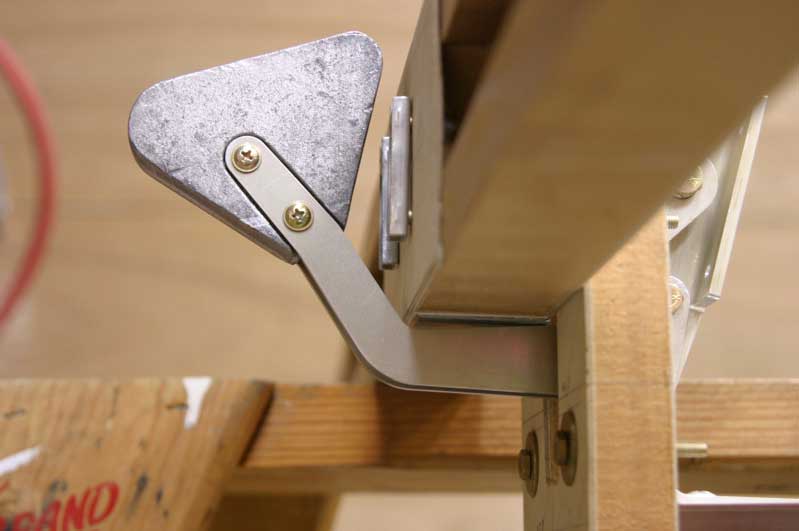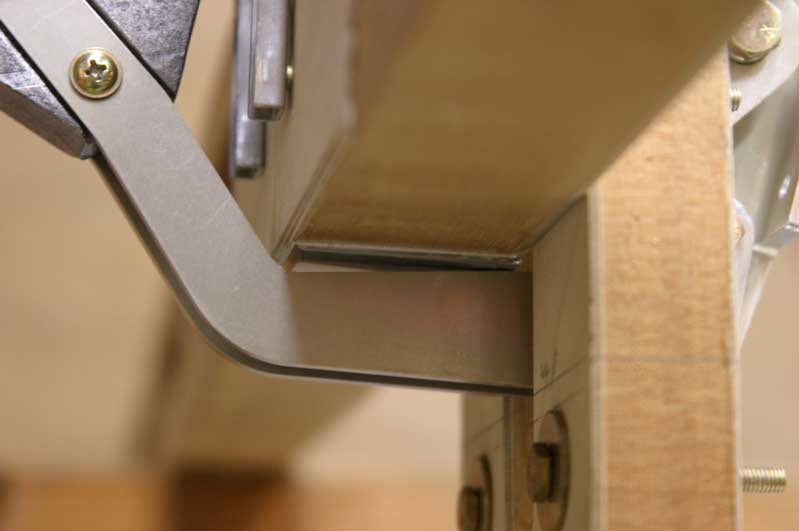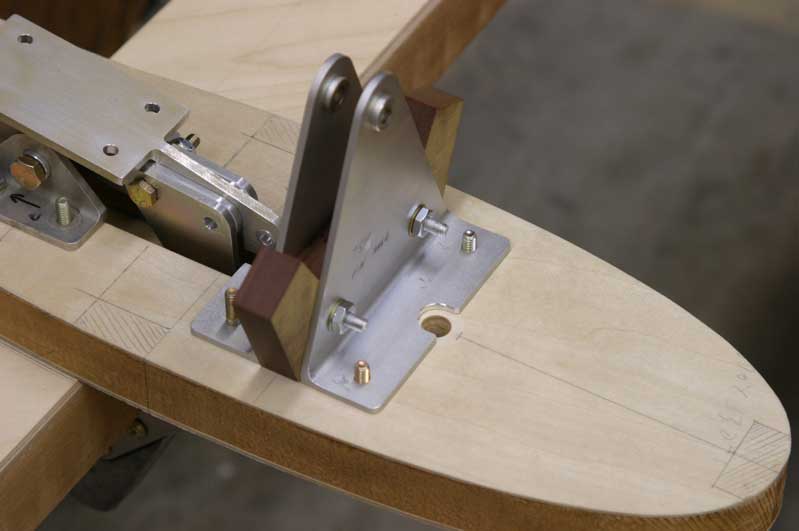John Kahrs
![]()
John Kahrs |
|

Elevator stop
How far into the minutae of building should I go with this blog? How about this: the elevator counterbalance weight assembly, when in the full down position, is misaligned with the elevator stop. Is this boring? Certainly. You can skip to the next entry.

The brackets that hold the elevator counterweight touch the stainless pad only on one end, not across the length of the pad. It doesn't look right to me. I drilled the stupid hole in the wrong place, and the whole affair has me reevaluating my working methods. I'm finding that following the plans is good, but actually mock assembling parts before drilling and gluing reveals tiny shortcomings of the plans, like the wiring hole that conflicted with the rudder hinge. If I'd just fiddled with the balance and control horn parts before drilling, I would immediately have spotted this. As I was measuring the 16 degree down limit on the elevator with a protractor, I wondered when I'd ever even need that much down elevator, imagining myself straining against the belts as I pitch the nose down and barf. Yeah, right. Then I considered when you actually have to push the stick all the way to the stop: when you're trying to recover from a spin. I measured a lot more carefully after that.

Here is the little slot I milled to allow clearance for the taillight wiring hole.
What surprises me most right now is the amount of light machining I've had to do. All this drilling, reaming, and even milling of parts has had me sitting in front of my little mini mill for two days. I never thought I'd have to use it much for the Falco, but already I'm drilling on the press, then reaming on the mill, or countersinking holes. As cheap is it was ($500), the squareness of the mill and its vise is comforting to me when drilling into metal parts.
|
|
Go back to John Kahrs